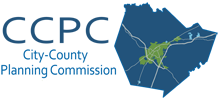The section of US 31W Bypass from the roundabout at University Drive to Lehman Avenue may see a road diet come to fruition in the next few years. A study conducted by the Metropolitan Planning Organization (MPO) with work completed by consulting firm, Strand Associates, analyzed the feasibility of a road diet on this section of the Bypass. The US 31W Bypass was built in the late 1940s as a narrow four-lane corridor located on the edge of the urban boundary at that time. Overtime the Bypass has become a heavily developed commercial corridor with a high density of entrances and approaches, and the current roadway exhibits very poor access control. The number of entrances and approaches generate frequent left-turn movements from the interior through lane, which reduces roadway capacity and increases crashes. Furthermore, the high frequency of access points creates additional safety concerns for bicycles and pedestrians along the route. To that end, the MPO and partnering agencies seek to improve safety and mobility for all roadway users along the Bypass corridor.
A road diet uses a roadway’s existing pavement footprint to restripe or reconfigure its travel lanes. In the instance of the Bypass, it is proposed to take the four travel lanes down to three – with one travel lane in each direction and one two-way left turn lane. This is a cost-effective solution to improve safety and mobility for all users.
Traffic modeling for the proposed Road Diet alternative (vs. 2030 no build scenario) shows a three-lane section on the Bypass provides acceptable traffic operations with forecasted 2030 traffic volumes. Through various analyses, the study also found that the Road Diet alternative would reduce crashes by 25 percent. Currently, the Bypass’ crash rate is 3 times the statewide average for similar roadways. Additionally, the study found that all signalized intersections (Cabell Dr., Broadway Ave., 10th Ave., and Lehman Ave.) would function (as measured by level of service) at or better than the future no build scenario for AM and PM peak hour traffic. In fact, the proposed road diet at the Bypass and Broadway Ave. intersection would result in a significant reduction in delay even with a reduction in the number of through lanes at the intersection. All other intersections impacted by the proposed Road Diet alternative operate with no more than six additional seconds of delay. The images below review the conceptual layouts of the signalized intersections in more detail.
For more information, please view the materials posted on our website here. If you have additional questions, or would like to provide a comment related to this study, please email Karissa.lemon@bgky.org no later than August 7th.



